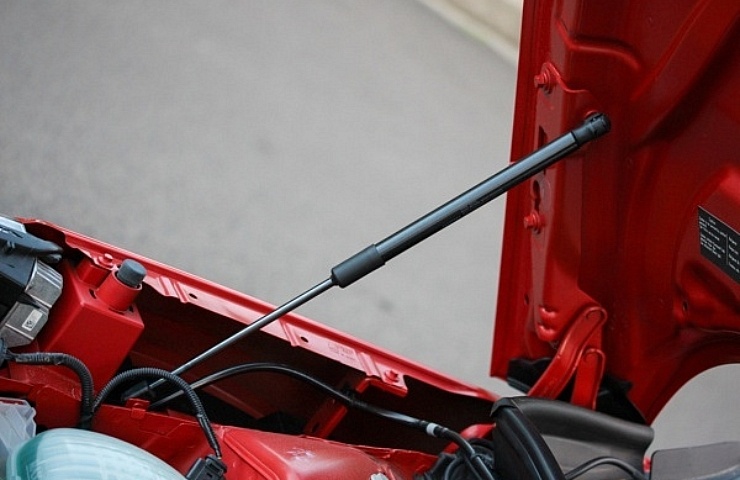Contents
How Hood Struts Work
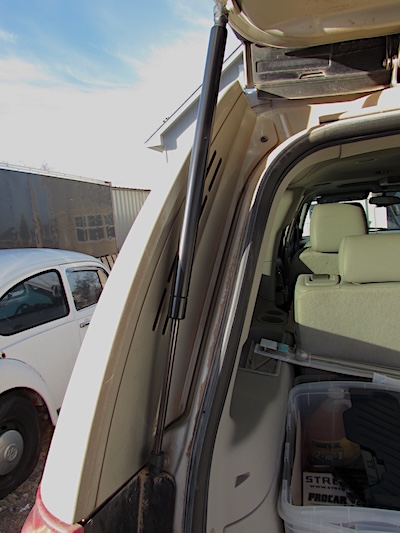
This is a trunk strut. Hood struts are the exact same thing, but located under the hood.
Hood struts, like trunk or hatch struts, are gas-actuated supports designed to assist in opening and holding pressure once they are up. In the closed position, the gas is highly compressed inside the cylinder. When you open the hood, the strut assists in lifting as gas pressure is exerted on the piston rod. Closing the hood compresses the gas again to restart the process.
The cylinder’s gas pressure must remain high enough to support the hood’s weight once fully raised. Over time, the gas leaks past the seals. This is normal wear and tear. There is no suggested replacement interval. Every hood strut will fail at some point, so you replace them as needed.
In most cases, you might notice that the hood is a little heavier or doesn’t stay as high as it used to. This is a sign that the gas has begun to leak and the strut is at the end of its life. You don’t have to replace it immediately, but rest assured, you have weeks—not months—before the strut fails.
Selecting a New Hood Strut
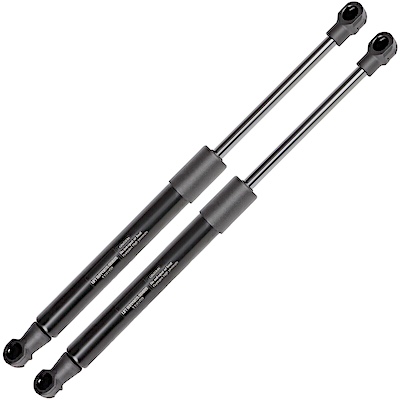
Most vehicles require two struts per hood, and it is highly recommended that you replace them both simultaneously. If you elect to replace just one (if two are needed), the new one will do more of the heavy lifting than the weaker, older strut. This will result in premature failure of the new strut.
Shop now for hood strutsHow to Replace a Hood Strut
For most vehicles, this is a five-minute job. A few take a little longer and require more tools due to the type of retainer on the strut and vehicle.
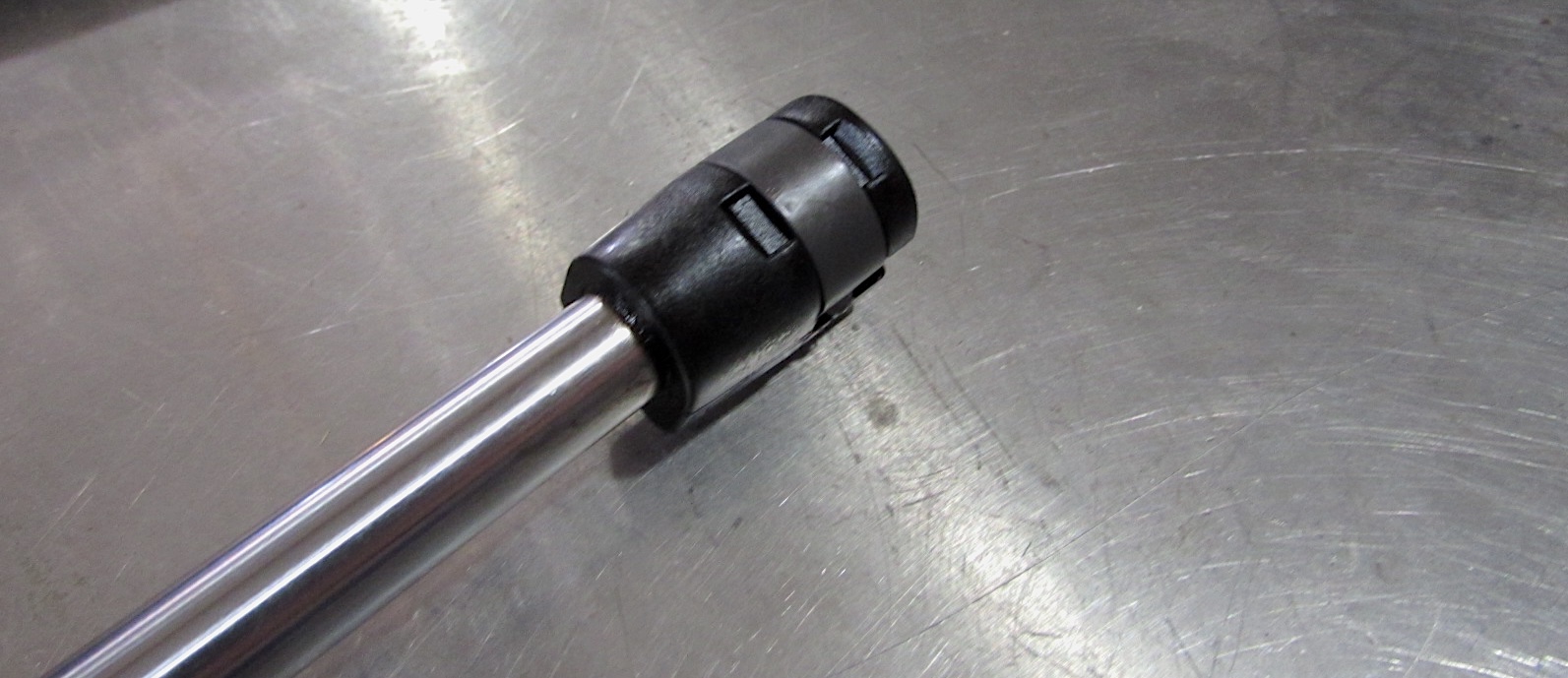
Most support lift struts use these spring steel clamps to secure the strut to a ball stud.
Most struts use a spring steel snap-ring on a metal or composite plastic end that snaps over a ball stud on the vehicle. The other type uses a permanently mounted stud ball that requires unbolting from the car to replace. This varies wildly by year, make, and vehicle model, but both types are often easily replaced.
Some hoods use short struts that are very strong. These can be tricky if you work alone and the hood movement is limited, or the hinge is hard to reach.
You’ll want an assistant for this task. If you do not have anyone available, don’t fret: You can use an extension prop or an old broom handle or wood length to support the hood’s weight. A helper can raise or lower the hood as needed, which makes it easier to install the new struts, especially on tighter-reach installations.
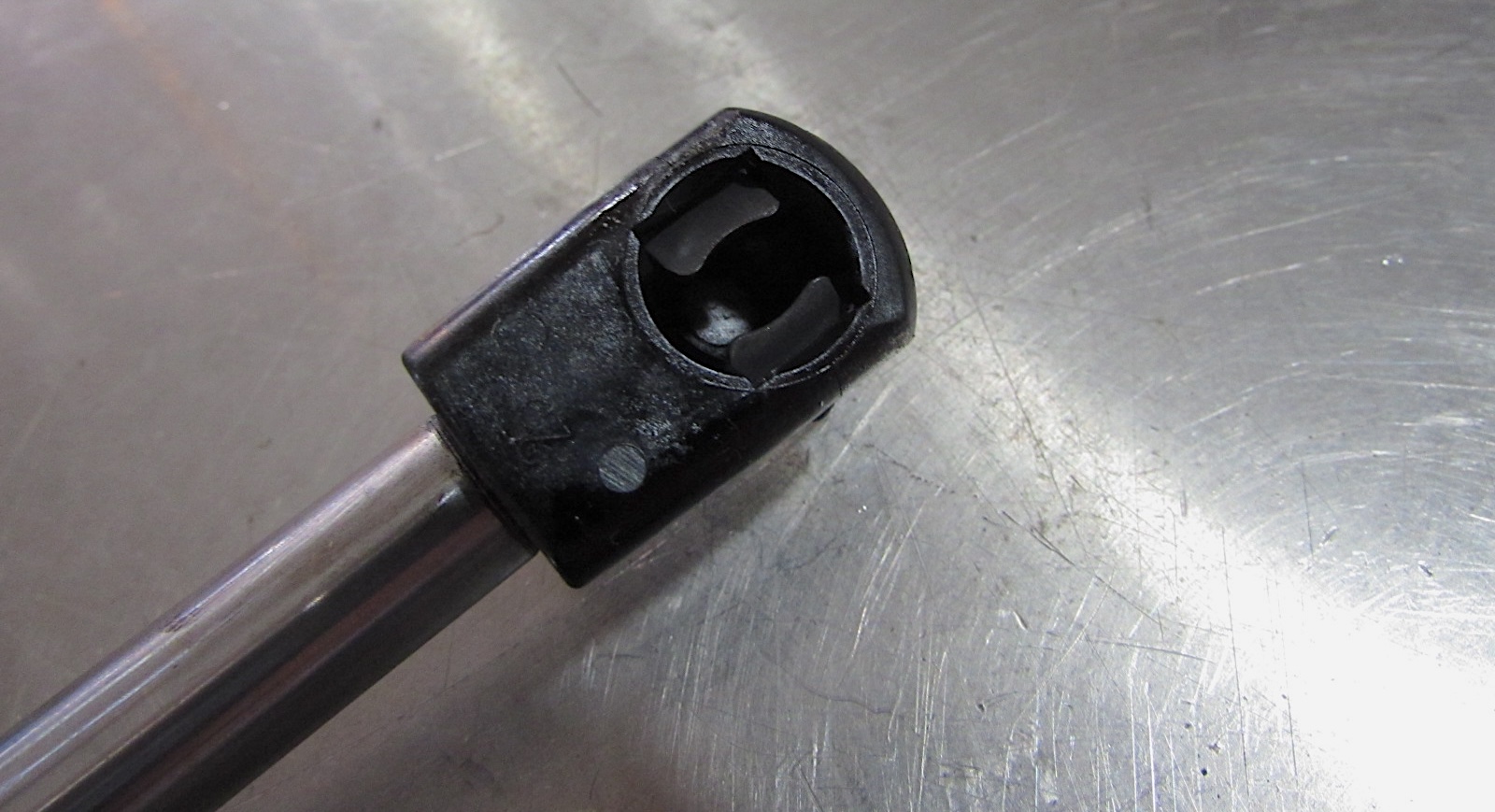
Inside the socket, you can see the ends of the spring clamp. This is a very secure mounting design.
Step-by-Step
Here’s how to replace the struts:
- Raise the hood. Have your assistant hold it up or use a prop to secure it well. If using a prop, ensure that the two points you use to support the hood are solid and that the prop can’t slip out of place.
- For spring-clip ball studs, use a flat-blade screwdriver to pry the spring clamp away from the head of the socket. For this purpose, there is an indention on the ball socket under one side of the clamp.
- Select the correct socket or screwdriver for bolt-in struts to remove the fastener(s).
- Once the mount is loose, pop the upper mount from the hood, then repeat for the lower mount. It does not matter which side you start with.
- Open the package of struts. Some struts come with multiple mounting options. Select the one that matches your vehicle.
- Install the upper mount and ensure it is solidly connected to the vehicle. It is easier to start the installation on the hood side. Sometimes, you must release the spring clamp on ball-stud mounts to get them to pop over the stud. If so, make sure you snap the clamp back into place.
- Install the lower mount. You will likely need to raise the hood more than when removing the old strut, as the new strut will extend further.
- Grab the strut in the middle of the main body and give it a few tugs to make sure it is solid and not loose. It shouldn’t pop off.
- Remove the prop or your assistant from supporting the hood. Then, close the hood and make sure it latches properly.
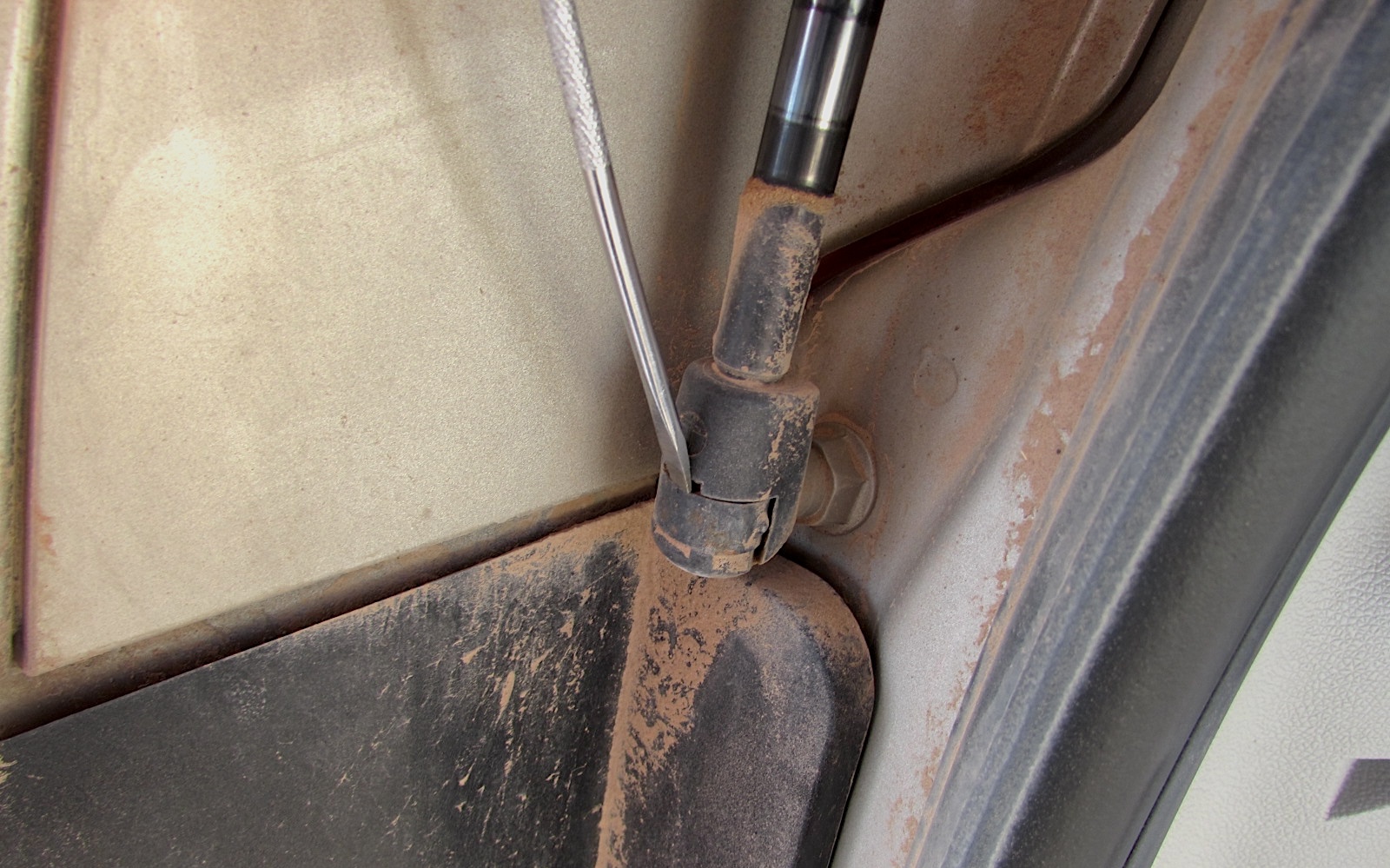
Removal is easy. Simply slip a flat blade screwdriver under the clamp and pry it out a bit until the ball stud is free.
Replacement Intervals Vary
Most hood struts last five to 10 years, but this varies by manufacturer and style of strut.
- Smaller struts tend to last longer as they have a shorter stroke. Less movement equals less friction on the seals.
- Long stroke struts tend to leak down sooner.
This isn’t something that you can change without serious modifications. Just replace your struts at the first sign of failure and your noggin will remain dent-free—at least from hoods anyway.
Shop now for hood struts
